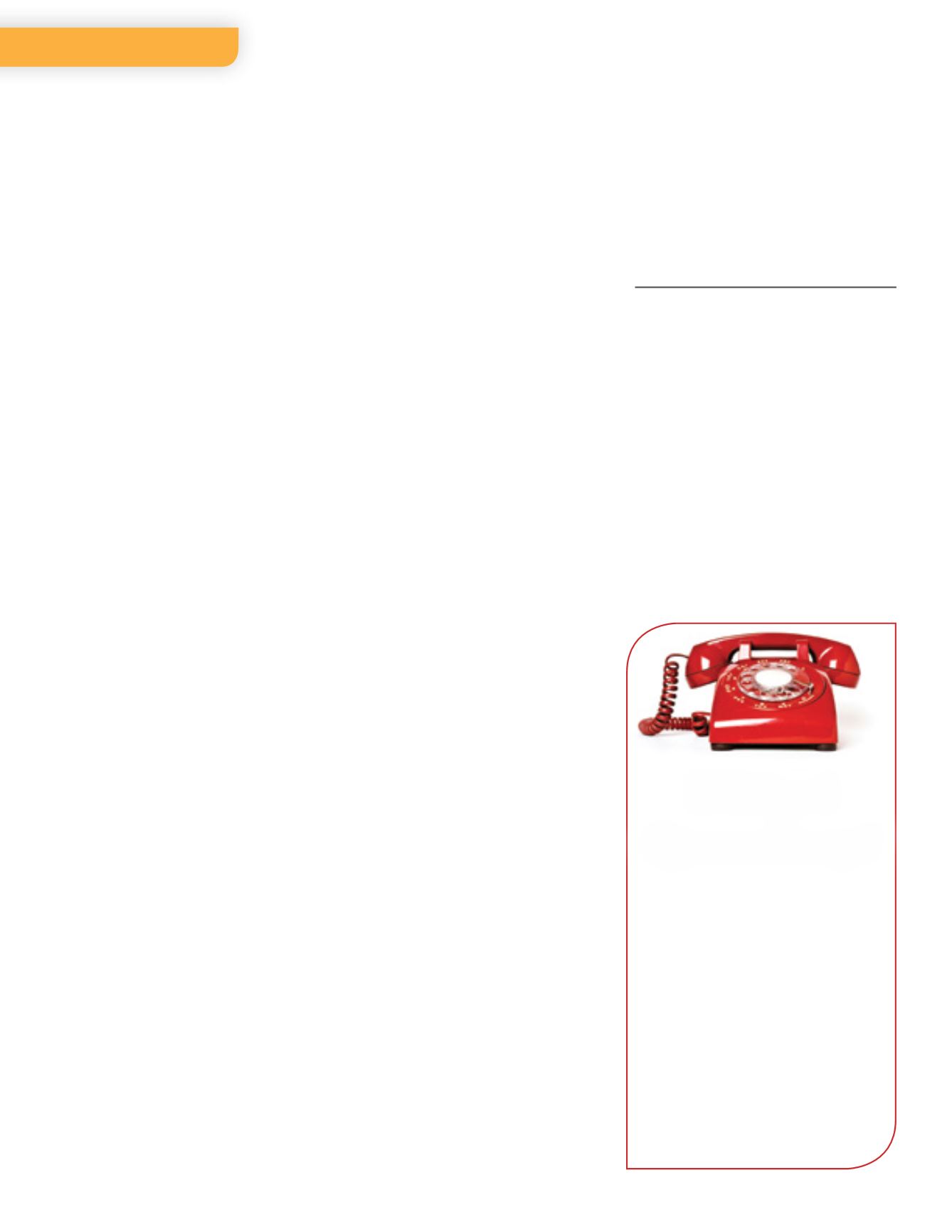

retroactively) even if he or she continues
to use tobacco.
Employers have discretion to decide
what alternative effort is “reasonable,”
and they are not required to offer the
same alternative to all tobacco users.
Employers can also limit the amount of
time in which an employee must complete
the alternative, so long as the time limit
is reasonable. However, if an employer
chooses to require participation in a
tobacco cessation program or other educa-
tional program, the employer must either
make the program available or help the
employee find such a program, and the
employee cannot be required to pay for
the program.
If an employee’s doctor indicates that
the employer’s alternative is not medi-
cally appropriate for the employee, the
employer must instead offer that employee
an alternative that accommodates the
recommendations of the employee’s
doctor.
Employers must communicate
the availability of a reasonable
alternative.
Any communications that describe the
tobacco surcharge must also indicate that
the employer offers a reasonable alterna-
tive method of qualifying for the lower
premium rate. Employers should be very
careful not to use statements such as “only
tobacco-free employees can qualify for the
lower rate” or “you qualify for the lower
rate only if you and your family members
do not use tobacco.”
In 2014, the HIPAA rules changed to
require that reasonable alternatives be
offered for tobacco users. Therefore, an
employer’s communications should be
updated if they indicate that the reason-
able alternative is available only if it is
unreasonably difficult due to a medical
condition or medically inadvisable to
attempt to quit tobacco use.
Tobacco-free employees
can be charged more if their
spouses or children use
tobacco.
An employer can decide whether the
tobacco surcharge applies only to the
tobacco use of the employee or whether an
employee’s entire family must be tobacco
free in order to qualify for the lower health
care premium. If an employer requires
that the entire family must be tobacco
free, the employer can require all tobacco-
using family members to complete the
reasonable alternative before the employee
qualifies for the lower premium.
The amount of the tobacco
surcharge must be limited, but
can be significant.
A tobacco surcharge, when combined
with any other wellness incentives that are
subject to the HIPAA rules, cannot exceed
fifty percent of the cost of the health plan.
When determining the cost of the health
plan, the calculation takes into account
both the employer and the employee
cost for the coverage. For example, if an
insurance company charges an employer
$500 for an employee’s coverage, and if
the employee’s cost is $100, the tobacco
surcharge could be as large as $250,
resulting in a $350 premium payment
for tobacco users and a $100 premium
payment for non-tobacco users.
The ADA rules would further limit the
amount of the incentive if the employer
tests for tobacco use. In that case, the
surcharge, when combined with any other
wellness incentives that are subject to the
ADA rules, cannot exceed 30 percent of
the cost of the health plan.
Employers may be limited in
how they deal with untruthful
employees.
Some employees will lie on their
tobacco use certifications just to qualify
for the lower rate. Others might misunder-
stand the scope of their certification and
think that their activities (
e.g
., an occa-
sional celebratory cigar) are not covered
by the surcharge. Still others might start
using tobacco and fail to update their
certification. In any case, employers
should be careful about how to respond
when they discover an inconsistency
between tobacco use and the certification.
Employers are allowed to retroactively
impose the tobacco surcharge on such
employees, and they are allowed to termi-
nate health plan coverage if their plan
Ethical
Quandary?
November Ethics Hotline
Attorneys
James D. Houston
698-5048
Carl J. Stich Jr.
241-3685
The members of the CBA Ethics &
Professional Responsibility Committee
listed above are available to help you
interpret your obligations under the Ohio
Rules of Professional Conduct. Questions
posed should be framed hypothetically
and should relate to your own prospective
conduct. The committee also accepts
requests for written opinions.
documents and summary plan descrip-
tions reflect their ability to do so. However,
employers should seek legal counsel before
taking any other action. Because this issue
involves the health plan, HIPAA’s privacy
rules might prevent the employer from
taking disciplinary employment action
against the employee.
Wilcoxon is a partner inThompson Hine LLP’s
Employee Benefits and Executive Compensation
group and advises employers on the legal requirements
applicable to group health plans.
12
l
November 2017 CBA REPORT
www.CincyBar.orgFeature Article


















